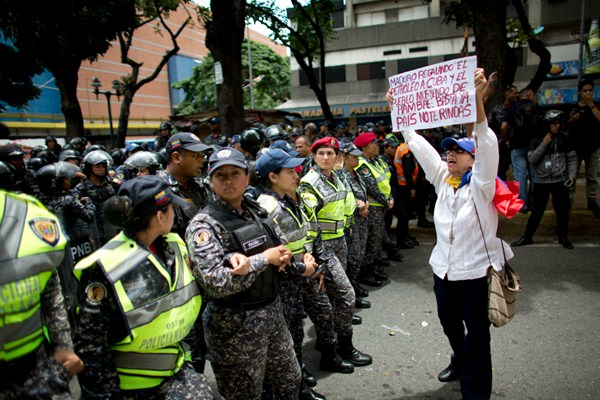Venezuela’s flailing oil industry has helped prop up global energy prices even as Saudi Arabia and Russia open the spigots and global oil demand remains robust. Though oil prices have recovered from their lows during the price collapse in 2015, Venezuelan output has since seen an incredible decline of 1 million barrels per day. The drop in oil production is further squeezing the Venezuelan economy, which faces critical shortages of goods and ballooning inflation that is expected to reach an astounding 1 million percent this year.
But could Venezuela’s oil production decline even more steeply? Three evolving developments will largely determine the answer, which would push Venezuela closer to the brink: whether creditors can seize assets in compensation for default; whether conditions for oil workers on the ground worsen, leading large numbers to abandon their jobs; and whether the United States and other countries impose additional sanctions.
Although Venezuelan crude oil production has been declining gradually since its peak of 3.4 million barrels per day just before Hugo Chavez took office in 1999, it has recently entered a spectacular free fall. In June 2018, production hit 1.34 million barrels per day, 30 percent lower than in June 2017. Oil exports to the U.S.—Venezuela’s biggest buyer—also dropped by more than 30 percent in the first half of this year compared to the same period last year.

